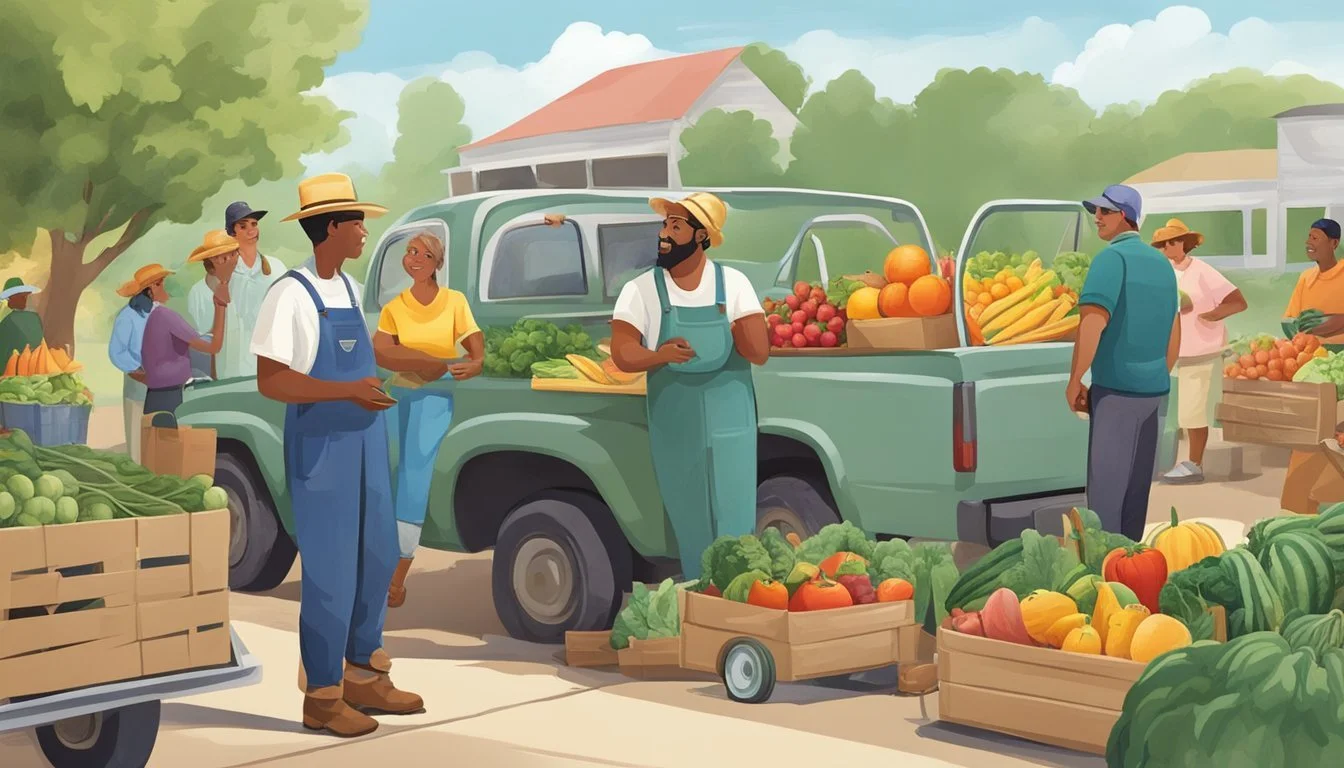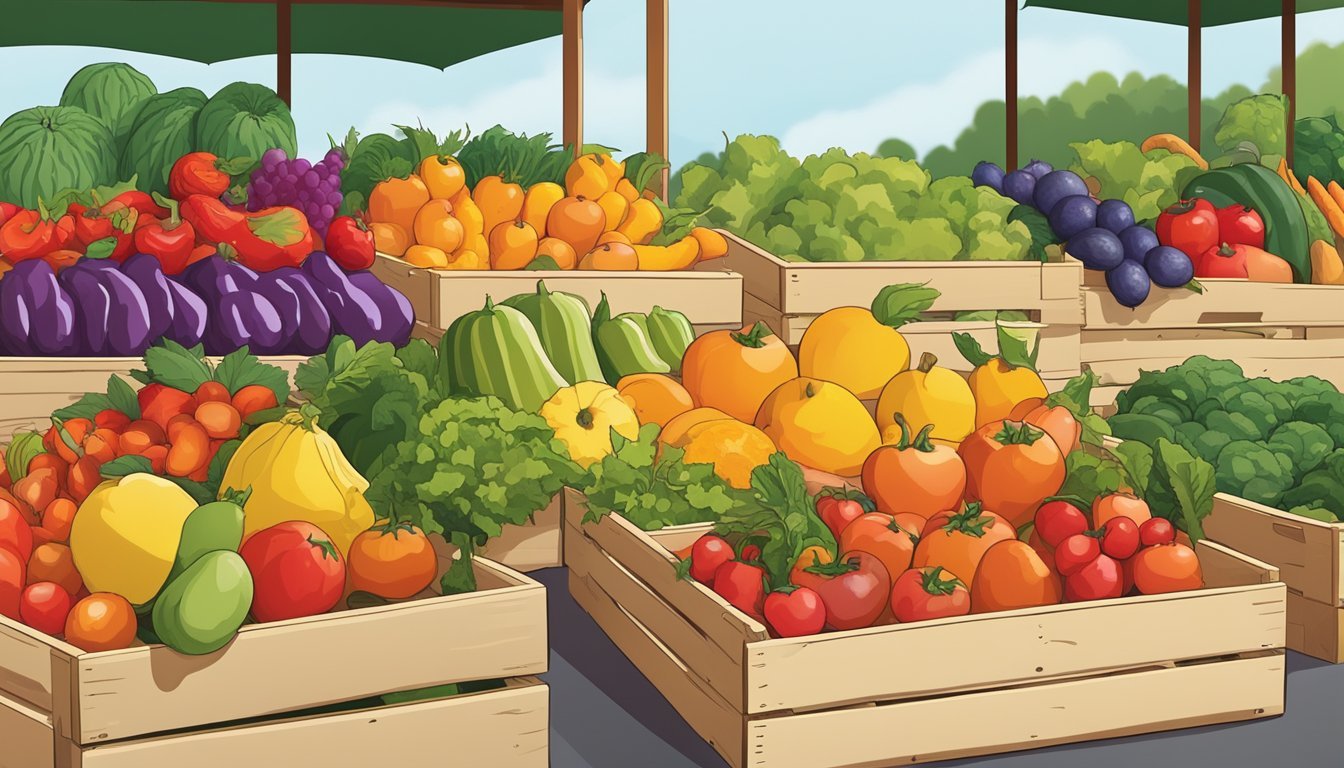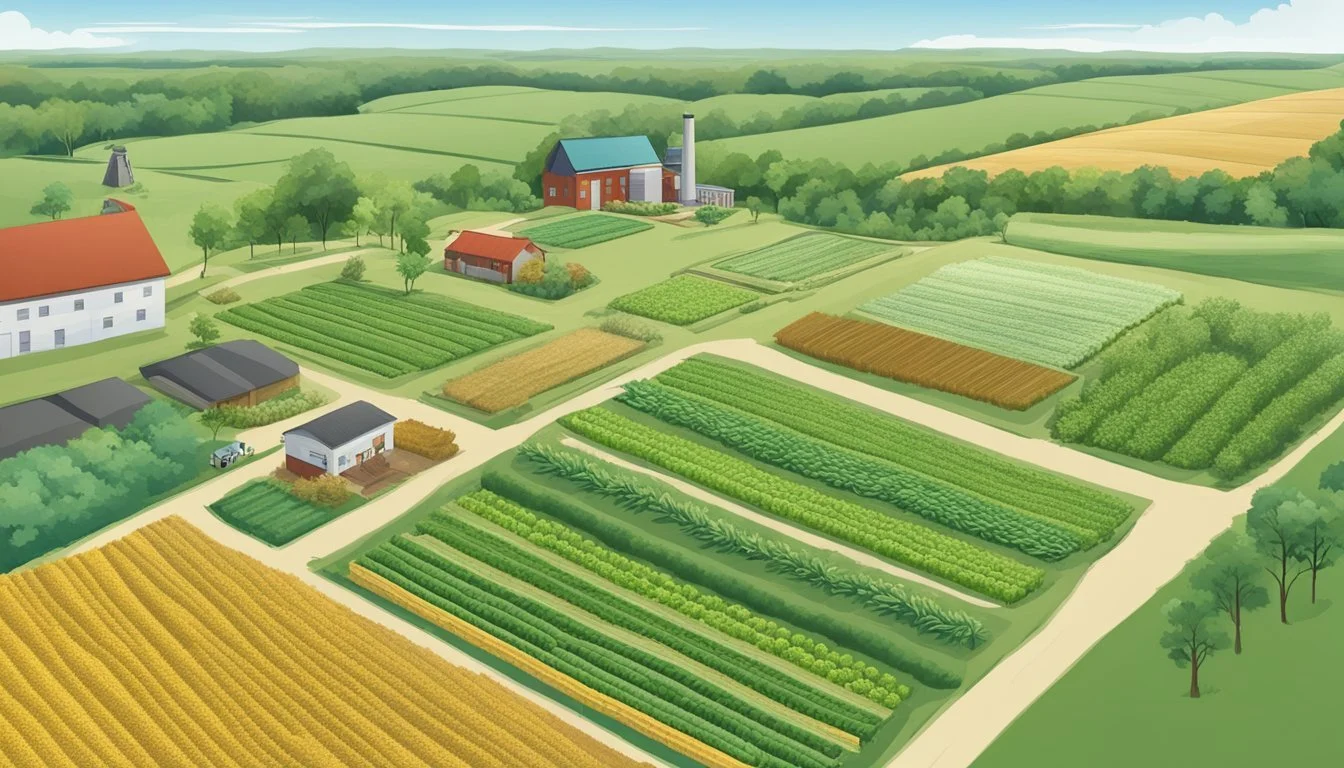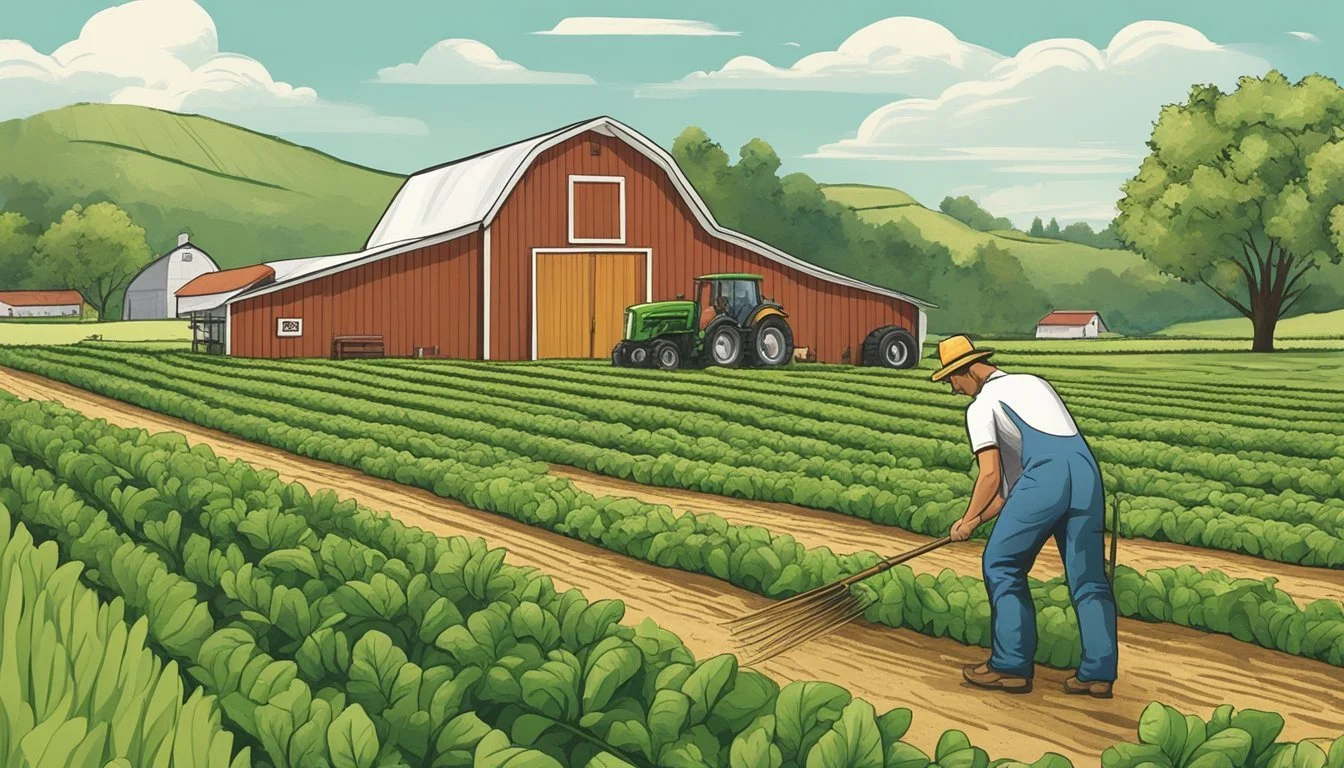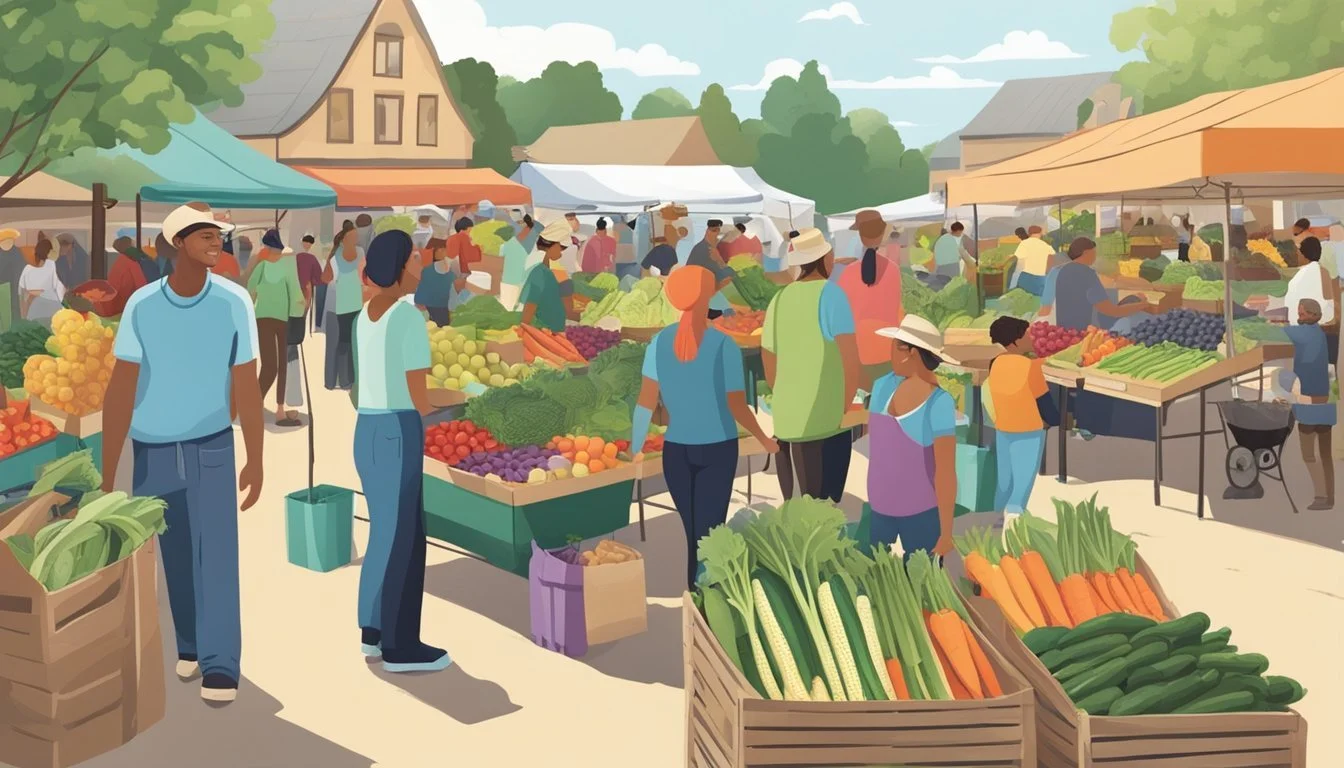Community Supported Agriculture in Indiana
A Guide to Local CSA Programs
Community Supported Agriculture, commonly known as CSA, is an agricultural model that has taken root across the United States, fostering a direct link between local farmers and consumers. Indiana has embraced this movement warmly, offering residents the opportunity to purchase shares or memberships from local farms. This innovative approach allows consumers to receive regular deliveries or pickups of a farm’s produce, ensuring a supply of fresh, locally-grown food while offering farmers more economic stability and a dedicated customer base.
In Indiana, CSAs vary in scope and service, with some providing a traditional array of vegetables, fruits, and herbs, while others may include a broader selection of products like eggs, dairy, and meat. The state's diverse agricultural offerings reflect its unique terroir and farming practices. With options ranging from seasonal commitments, commonly spanning from spring to fall, to year-round programs, Indiana's CSAs cater to a variety of consumer needs and preferences. Engaging in CSA not only supports the local economy but also promotes sustainable agriculture by reducing the carbon footprint associated with long-distance food transportation.
Beyond the economic and environmental benefits, Indiana’s CSA programs cultivate a sense of community. Members often have the chance to develop a relationship with the farmers and learn more about where their food comes from, how it's grown, and ways to prepare it. Some CSAs in Indiana encourage this connection through farm visits, events, and newsletters, further strengthening the bond between land, food, and people. Through CSA, Indiana demonstrates its commitment to a system that benefits farmers and consumers alike, promoting health, sustainability, and community ties.
Understanding CSA
Community Supported Agriculture (CSA) in Indiana is a partnership between farmers and consumers where the risks and rewards of farming are shared. The concept thrives on membership and community involvement, connecting people to their local food systems and fostering sustainable, healthy eating habits.
Foundations of CSA
Community Supported Agriculture rests on a simple, yet profound arrangement: consumers purchase a share of the harvest upfront, which provides farmers with predictable revenue at the beginning of the season. This model alleviates some of the financial risks for farmers, as they receive payment before the harvest begins. To become a member, individuals typically select a membership level which correlates with the size of the produce share they will receive.
Predictable Revenue: Provides stability for farmers.
Membership: Community members become shareholders.
Share: A portion of the farm's products provided to members regularly.
Benefits of CSA
The benefits of CSA extend to both farmers and consumers in Indiana. Farmers enjoy a direct connection with consumers and a guaranteed market for their produce, while consumers receive fresh, healthy, seasonal produce. This arrangement supports sustainable agricultural practices by reducing food miles and encouraging eco-friendly methods.
For the Farmer:
Economic support: Upfront payment for seasonal harvest.
Market Assurance: Committed community members as consumers.
For the Consumer:
Health and Freshness: Access to fresh and nutritious produce.
Community Connection: Engagement in local agriculture and food systems.
CSA in Indiana
Community Supported Agriculture (CSA) has established a firm presence in Indiana, combining the community's need for fresh produce with support for local farmers.
Popularity of CSA in Indiana
In Indiana, CSAs have gained traction as a sustainable model for local agriculture. They provide the community with regular allotments of farm-fresh produce while ensuring economic support and predictability for small-scale farmers. The assurance of direct sales to consumers allows farmers to focus on quality, environmentally friendly farming practices without the intense competition of the broader marketplace.
Local CSA Examples
Several successful CSAs operate across Indiana, each with unique offerings and community engagement methods:
Creme de la Crop Organic Farm
Leann Landgrebe Sego
208 North 250 West
Valparaiso, IN 46385
Phone: 219.510.4547
Web: cremedelacrop.comLiving Roots Farm
CSA Contact: michael @ indianacommunity.org
Phone: 812-727-5444
Season: 24 weeks from mid-May to October
Locations: Bloomington, Indianapolis, Bedford, French LickIrvington CSA
Season: Begins early to mid-May, runs for 25 weeks
Pickup: Fridays, 5:30 - 6:30 p.m., Irvington, IN
Provider: Farmed by Levi Fisher, Jr. and family, Amish community, Montezuma, INFood in Neighborhoods
Season: Usually 20 - 22 weeks, May to October
Offering: Fresh produce subscription with various pickup locations
These CSAs represent a tapestry of local efforts to maintain traditions of farming and to support Indiana farmers. Each farm offers a subscription service that allows participants to pre-purchase shares of the season's harvest, fostering a direct connection between farmers and the local community. This model not only boosts local economies but also encourages sustainable agricultural practices.
Joining a CSA
Joining a Community Supported Agriculture (CSA) program in Indiana connects consumers with local farms, offering fresh, seasonal produce and other farm products. It's an opportunity to support community agriculture and receive a share of the harvest on a regular basis.
How to Find a CSA
One can locate CSAs in Indiana through online directories like LocalHarvest or visiting local farmers markets in areas like Indianapolis, where farmers often advertise their CSA programs. The Indiana CSA Farms website may also list available shares, providing a comprehensive overview of options throughout the state.
Online Directories: Useful for discovering a variety of CSA options.
Farmers Markets: Ideal for meeting farmers directly and asking questions about their CSA programs.
Selecting the Right CSA
When choosing a CSA, consider the variety and volume of produce offered. It's important to inquire about the types of vegetables and fruit provided and whether the share size corresponds to one's household needs. Additionally, understanding the farm's practices, whether they're eco-friendly or organic, can influence the decision.
Type of Produce: Ensure variety suits personal preferences.
Share Size: Determine if the amount of produce meets household consumption.
Membership and Payment Information
CSA membership usually involves a subscription-like model where members pay upfront for a season's worth of products. This payment supports the farm's operational costs early in the season. Some farms might offer payment plans or accept food assistance programs to ensure accessibility.
Upfront Payment: Secures membership and supports the farm.
Payment Plans: May be available to accommodate different budgets.
Food Assistance Programs: Check if the farm accepts these for payment.
Security in terms of food quality and commitment from the farm is typically assured, as the relationship between farmer and consumer is at the core of CSA values.
Seasonal and Local Produce
The selection of seasonal and local produce in Indiana is not only a testament to the state's rich agricultural fabric but also a healthier and environmentally friendly choice for consumers. Community Supported Agriculture (CSA) memberships are a practical way to access such produce, directly connecting farmers and consumers.
Advantages of Seasonal Produce
Seasonal produce refers to fruits and vegetables grown and harvested at the time of the year when they are ripe and ready. This practice ensures that consumers receive food at its peak in both flavor and nutrition. Here are key advantages:
Flavor and Nutritional Benefits: Seasonal vegetables and fruits are picked when they're ripe and fully developed. The result is a richer flavor and higher nutrient content.
Sustainable Choice: Aligning crop production with natural cycles reduces reliance on artificial means of cultivation, making it more environmentally friendly.
Benefits of Local Produce
Purchasing local produce comes with a multitude of benefits ranging from economic to environmental:
Support for Local Farmers: Buying from Indiana's CSAs means that consumers are providing direct economic support to local farmers. This can lead to a more stable and robust local agricultural economy.
Reduction in Carbon Footprint: Consumers who choose local produce help minimize transportation distances and thus reduce the carbon footprint associated with long-distance food transport.
Freshness: Local produce often goes from farm to table within a shorter time frame, maintaining its freshness and extending its shelf life without the need for preservatives.
Through CSAs, Indiana residents have the opportunity to enjoy handpicked, high-quality, and environmentally friendly produce throughout the state's distinct seasons, bolstering local economies and promoting increased vegetable consumption.
Environmental and Economic Impacts
Community Supported Agriculture (CSA) in Indiana exemplifies the integration of environmental stewardship and economic viability through its promotion of sustainable farming and bolstering of local economies.
Sustainable Farming Practices
CSAs in Indiana have been pivotal in advancing sustainable farming practices. They typically involve organic methods that reduce the reliance on chemical pesticides and fertilizers, fostering healthier soil and ecosystems. Farmers benefit from a community-supported model by gaining a predictable market for their produce, which allows them to plan and implement more sustainable agriculture techniques. For example, crop rotations and polycultures—growing multiple crops in the same space—are common, enhancing biodiversity and soil health.
Supporting Local Economies
Local economies thrive when consumers purchase directly from regional farmers. CSAs directly connect the community to the local farmers, leading to economic benefits such as job creation and the retention of funds within the community. Here are some direct economic advantages of CSAs in Indiana:
Reinvestment: Money spent on CSAs stays local, circulating within the economy and contributing to its strength.
Job Opportunities: Small-scale farming operations often provide local employment opportunities.
Local Growth: Revenue from CSA membership fees allows farmers not only to sustain their livelihoods but also to invest in farm improvements and innovation.
CSA Farming Techniques
In Indiana, CSA farming techniques prioritize environmental sustainability and animal welfare. The methods used are tailored to meet the community's demand for organic and naturally grown produce as well as ethically raised animal products.
Organic and Natural Farming
Organic and natural farming are cornerstone practices of CSA farms in Indiana. Farmers avoid synthetic pesticides and fertilizers, focusing on:
Soil health: Utilizing compost and green manure to enrich the soil naturally.
Crop rotation: Preventing pest cycles and maintaining soil fertility by alternating crops.
These techniques ensure the production of fruits and vegetables that adhere to the standards for organic certification.
Pasture-Raised and Free-Range Principles
Animal husbandry in Indiana's CSA farms is defined by:
Pasture-raised livestock: Animals are raised on open pastures, allowing for natural behaviors and diets.
Grass-fed beef: Cattle are fed grass, which is their natural diet, rather than grain, leading to leaner and potentially more nutritious beef.
Free-range eggs: Poultry are given the freedom to roam outdoors, contributing to higher quality eggs.
By incorporating these principles, CSA farms contribute to sustainable farming practices and offer products that are in line with ethical and health-conscious consumer interests.
From Farms to Tables
Community Supported Agriculture in Indiana bridges the gap between the farm and the dining table by offering fresh, local produce directly to consumers. Subscribers to CSA programs often receive their shares via delivery or pickup, and they are provided with a variety of vegetables, sometimes including culinary herbs and other farm products conducive to enhancing their cooking experiences.
CSA Delivery and Pickup
Delivery: Farmers organize deliveries that are either direct to subscribers' homes or to a centralized drop-off location. This allows for convenience and an opportunity to get to know the producer of your food.
Home Delivery: A delivery schedule is often predetermined, and customers are informed of their delivery days.
Drop-off Locations: Common drop-off points include farmers markets, local businesses, or community hubs.
Pickup: In contrast to delivery, pickup involves subscribers traveling to a designated location to collect their CSA shares. This is typically done on a fixed day of the week to maintain consistency.
Farmers Markets: Some CSAs arrange for pickup at local farmers markets where consumers can collect their shares.
Farm-Based Pickup: Consumers may also have the option to pick up directly from the farm, providing a chance to visit the land where their food is grown.
Preparation and Cooking Tips
Cooking: With a mix of staple vegetables and occasional specialty items like culinary herbs, subscribers may need guidance for preparation.
Recipes: Some CSAs provide recipes tailored to the week's box contents to inspire and educate subscribers.
Culinary Workshops: Occasionally, a CSA may host cooking classes or online demonstrations on how to utilize the fresh produce.
Storage and Shelf-life: It's important for consumers to know how to store their CSA produce to maximize freshness and longevity.
Herbs and Delicate Items: Herbs and tender greens usually require refrigeration in breathable containers.
Root Vegetables and Squash: These can often be stored in cool, dry places to extend their shelf life.
Engaging with CSAs
Community Supported Agriculture (CSA) initiatives in Indiana foster a closer bond between consumers and their local food providers. Through CSA programs, members buy shares of a farm's harvest in advance, securing a season-long supply of fresh produce and often gaining access to additional benefits such as community events and educational programs.
Building Community Relationships
In Indiana, farms like Living Roots bridge the gap between rural producers and urban residents. These CSAs provide more than just a box of vegetables; they create a vital link that supports local farmers and strengthens the relationship between community members and the source of their food. For example, Living Roots offers flexible pickups in Bloomington, Indianapolis, Bedford, or French Lick, making the farm's organic bounty accessible to a broader range of households.
Educational Opportunities and Workshops
Engagement with a CSA often extends beyond the exchange of produce. Farms may offer workshops that provide valuable skills and knowledge on sustainable farming practices. The Organic Farm School, for instance, includes hands-on training for future farmers and food system professionals. CSA members might find workshops on everything from seasonal cooking to preserving the harvest, increasing their understanding of organic agriculture and the ways they can contribute to a more sustainable food system.
Frequently Asked Questions
What is a CSA?
Community Supported Agriculture, or CSA, is a model of farming where consumers purchase subscriptions, known as "shares," to receive a regular supply of locally grown produce during the agricultural season.
How does CSA membership work?
Individuals can become CSA members by paying the farmer an upfront sum at the beginning of the season. This financial support helps farmers plan and fund their operations, with members receiving fresh produce, often weekly or bi-weekly.
What might I receive in a CSA share in Indiana?
Shares typically include a variety of fresh, seasonal vegetables and fruits. Some Indiana CSAs also offer options such as pastured pork and eggs, incorporating a wider range of local farm products.
What are the health benefits of joining a CSA?
Members benefit from access to fresh, nutrient-rich foods. Additionally, CSA produce is often organic or uses minimal pesticides, which is healthier for both people and the environment.
Share Options Description Full Share Ideal for families; provides a weekly box of assorted farm produce. Half Share Suitable for smaller households; members receive produce every other week.
Can I join a CSA in Indianapolis?
Yes, various CSA programs are available in Indianapolis, allowing residents to support local agriculture and enjoy fresh produce directly from nearby farms.
Is CSA participation seasonal?
Yes, CSA typically aligns with the local growing season. In Indiana, this means shares are usually available from spring through late fall, depending on the farm.
Conclusion
In Indiana, Community Supported Agriculture (CSA) embodies a model that reinforces sustainable food systems. This approach benefits both local farmers and consumers, with the emphasis on ecological balance and communal well-being. Consumers gain access to fresh, local produce, fostering a habit of healthy living and an appreciation for the nutritional value found in naturally cultivated farm products.
Through the CSA model, participants invest in their community's agricultural future. They provide upfront financial support to local farms, which in return, supplies them with a portion of the harvest. This symbiosis stabilizes farm income and promotes the sharing of agricultural risk.
The presence of CSA in Indiana mirrors an investment in sustainability. It minimizes transportation costs and environmental impact, offering an eco-friendlier alternative to traditional grocery supply chains. CSA advocates for minimal use of synthetic inputs, thus safeguarding both the land and the health of the community.
Indiana's approach to CSA does not merely establish an economic transaction; it fosters a partnership. It is a commitment to community resilience and sustainability that goes beyond the dinner plate directly into the heart of agricultural stewardship and environmental consciousness.




